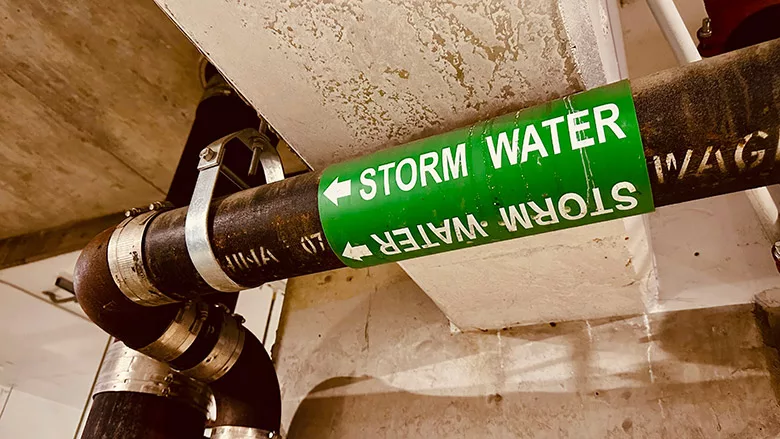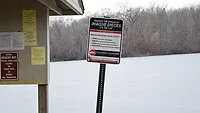9 Preventive Measures for Mitigating Stormwater Pollution during Your Next Project

Photo credit: Douglas Rissing / iStock / Getty Images
Construction sites are notorious sources of stormwater pollutants. Although remediation and restoration projects may be less disruptive to the site than others, their activities can still dirty bodies of water and endanger marine ecosystems.
Fortunately, professionals can adopt these nine preventive measures to minimize their environmental impact during rainy months.
1. Set up Inlet Controls
Anything that flows into storm drains goes directly into lakes, streams, rivers or the sea. Filtering out pollutants from construction sites — such as sediment, debris, pieces of plastic and metal, dead foliage, and food waste — is necessary. Keeping them from getting into catch basins is more straightforward than addressing widespread water contamination.
Install inlet controls. Rock and sandbags, sediment control logs, and gravel barriers are the best options. Inlet controls trap everything, so pollutants can accumulate quickly. Remove buildups when they reach halfway up the inlet controls to avoid risking stormwater contamination.
2. Maintain Vehicles Accordingly
Proper equipment and machinery upkeep in appropriate locations prevents grease and oil leaks.1 Read the owner’s manuals to determine how often the manufacturers recommend inspecting for damage.
While following manufacturer recommendations helps, avoid adhering to them unquestioningly. Construction machinery may fail between scheduled inspections when used frequently, so check it for minor problems and inefficiencies ahead of schedule to tune them up accordingly.
Apply the same logic to automobiles. Poorly maintained passenger vehicles can leak fluids that can remain on the ground, and runoff can carry into the stormwater system.
3. Cover Soil and Material Stockpiles
Tarping piles of soil and construction supplies is crucial for keeping catch basins contaminant-free. Some pieces can go airborne when the wind blows or drift away due to stormwater runoff when uncovered.
4. Preserve Vegetation as Much as Possible
Leaving the natural landscape untouched is critical in preventing sediment pollution. Uprooting plants and grinding stumps can disturb and expose the soil, increasing the chances of erosion.2
Ridding the site of hazardous trees and shrubs may be necessary to prevent further building damage and ensure the structure is safe for repairs. In this case, avoid removing more than necessary.
5. Keep Sediment Within the Perimeter
Sediment is unavoidable. The team must make keeping this pollutant under control — especially in downhill areas — its top priority.
Barricading the site’s sloping boundaries with silt fences or sediment filter logs matters. These perimeter control solutions help prevent sediment from reaching the street and storm drains.
6. Install Washout Basins
Washing filthy containers near storm drains is a bad habit many remediation and restoration professionals must break. An environmentally responsible construction site must have a dedicated basin for proper pollutant containment.
Lining this enclosed area with plastic renders it impervious, keeping water contaminated with stucco, concrete, drywall mud, paint and mortar residue from leaking. A desirable option for the job is a durable washout bag. Aside from being portable, its fabric is immune to the elements and can withstand harsh weather conditions.
7. Observe Best Waste Disposal Practices
Handling waste is half the battle. Regardless of how short the project's expected duration is, there must be a designated area for various waste types — hazardous, construction and demolition.
Signage must be visible to remind workers to segregate, aiding disposal. Protect waste bins from run-on and runoff while construction is ongoing to ensure their contents stay where they are.
8. Update the Stormwater Pollution Prevention Plan (SWPPP)
An SWPPP guides the construction team in managing stormwater pollution. An ad-hoc committee named the Pollution Prevention Team is in charge of implementing it, ensuring everyone keeps to the letter of the law.
SWPPP checklists vary since this written document is site-specific. Nevertheless, it should have the following sections:
- Site description: Includes the site’s name and address, locations of notable features — such as receiving waters, offloading areas and stormwater monitoring points — and a map showing where the site is geographically
- Pollution Prevention Team members: Lists the names and positions of the people tasked with implementing the SWPPP
- Possible pollution sources: Notes the activities prone to leaks and spills, especially those with a recent history of leakage and spillage
- Control measures and procedures: Discusses the strategies for keeping on-site pollutants in check
- Response plans: Details the steps for controlling leakage and spillage
- Routine inspections and monitoring: Outlines recordkeeping practices to log stormwater outflow
- Employee training: Mentions the training programs construction team members have taken to manage and mitigate stormwater pollution
SWPPPs aren’t evergreen. Discerning remediation and restoration companies update or review them once yearly, ensuring they remain relevant to sites’ unique topography and are compliant.3
9. Know Relevant State-Level Regulations
The U.S. Environmental Protection Agency is the primary regulator that sets guidelines for implementing environmental laws throughout the country. However, states can have their own health and environmental agencies.4 Understanding and complying with state-specific stormwater pollution regulations is vital to avoiding hefty fines and consequential reputational damage.
Make Stormwater Pollution Mitigation a Project Priority
Construction companies can easily find themselves in hot water by committing glaring pollution mismanagement. These preventive measures empower remediation and restoration teams to make wise decisions and avoid cardinal errors resulting in stormwater contamination.
Resources
Looking for a reprint of this article?
From high-res PDFs to custom plaques, order your copy today!








